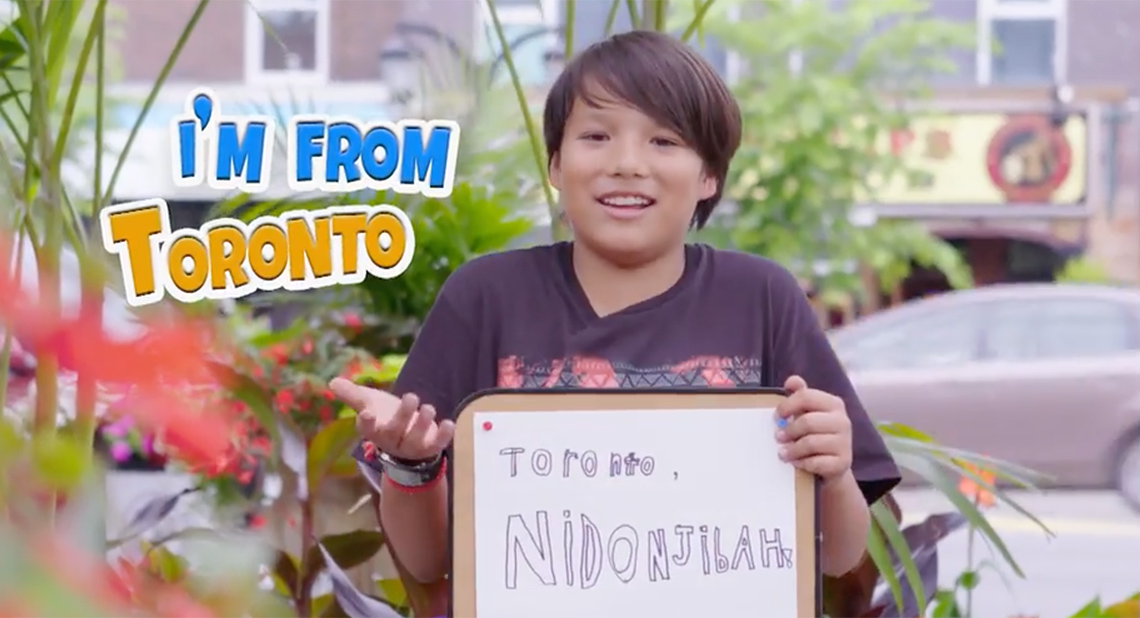Minds On
Introductions
Let’s explore a video in which we meet Jacob, a Cree and Ojibwe boy from Toronto.
Student Success
Think-Pair-Share
What did you learn about Jacob from his introduction?
How did he share his ideas?
Discuss with a partner, if possible.
Note to teachers: See your teacher guide for collaboration tools, ideas and suggestions.
Action
Oral presentation strategies

In the video from our Minds On activity, Jacob introduced himself by giving an oral presentation. He used different oral presentation strategies to share information.
Oral presentation strategies include:
| Verbal cues | expressiveness and intonation |
|---|---|
| Non-verbal cues | body language and gestures |
| Visual aids | diagrams, graphic organizers, charts, props, and instruments |
These strategies help the audience understand the presenter’s message.
Reflect on the different presentation strategies that Jacob used. If you need help, press a 'Hint' to be reminded of a presentation strategy that Jacob used:
Complete the Jacob’s Presentation Strategies Table in your notebook or using the following fillable and printable document. You can also use a method of your choice.
Press the ‘Activity’ button to access Jacob’s Presentation Strategies Table.
Being attentive
What can you do as an audience member to make sure you are being attentive? Let’s review our attentiveness strategies.
For each attentiveness strategy, select the missing verb from the drop-down menu.

Creating introductions
Think about when you meet someone for the first time. What information would you like to share about yourself?
Choose two or three oral presentation strategies to use in your introduction for our Consolidation activity.
Consolidation
Using presentation strategies to introduce ourselves
Introduce yourself to a partner if possible, or record your introduction using a method of your choice. Remember to use the presentation strategies you chose in our Action activity.

Have a partner introduce themselves to you, if possible. Remember to use attentiveness strategies when your partner is presenting.
Get feedback or complete a self-assessment
Get feedback from a partner if possible, or complete the Introduction Self-Assessment Rubric in your notebook or using the following fillable and printable document. You can also use a method of your choice.

Press the Activity button to access the Introduction Self-Assessment Rubric.
Activity (Open PDF in a new tab)When you are finished getting feedback or completing your self-assessment, respond to the following questions:
- Which presentation strategies did you choose?
- Did they help you share your ideas clearly?
- What did you learn from this activity that you can use for future presentations?
Record your responses using a method of your choice.
Reflection
How do you feel about what you have learned in this activity? Which of the next four sentences best matches how you are feeling about your learning? Press the button that is beside this sentence.
I feel…
Now, record your ideas about your feelings using a voice recorder, speech-to-text, or writing tool.